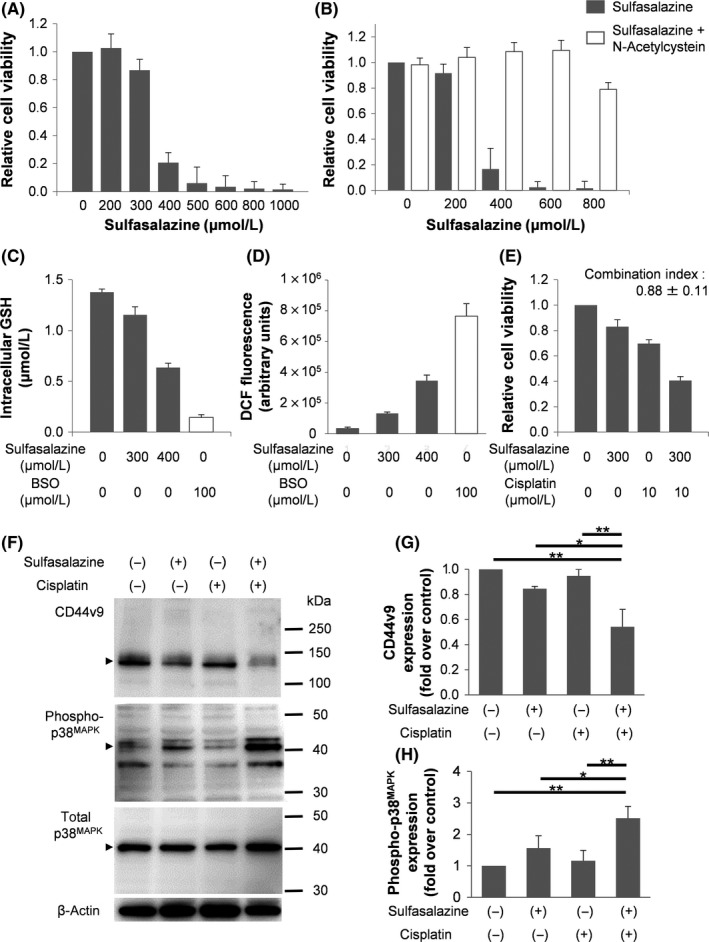Figure 2.

Sulfasalazine selectively inhibits cell proliferation, decreases glutathione (GSH) synthesis, increases reactive oxygen species (ROS) levels, and enhances cisplatin‐induced cytotoxic effects in MBT‐2V cells. A, Cytotoxic effects of sulfasalazine (SSZ) in MBT‐2V cells. Cells were exposed to various concentrations of SSZ for 48 h. B, Cytotoxic effects of SSZ in the presence or absence of N‐acetylcysteine (NAC, an antioxidant). Cells were exposed to various concentrations of SSZ with or without NAC (3 μmol/L) for 48 h. C, Intracellular GSH levels of MBT‐2V cells treated with the vehicle control, 300 or 400 μmol/L SSZ, and 100 μmol/L L‐buthionine‐sulfoximine (BSO) for 24 h. D, Quantitative analysis of ROS production by MBT‐2V cells treated with the vehicle control, 300 or 400 μmol/L SSZ, and 100 μmol/L BSO for 24 h. E, Cytotoxic effects of SSZ (300 μmol/L), cisplatin (CDDP) (10 μmol/L), and their combinations in MBT‐2V cells for 48 h. F, Expression of CD44v9, phospho‐p38MAPK, and total p38MAPK protein in MBT‐2V cells treated with the vehicle control, SSZ alone (300 μmol/L), CDDP alone (10 μmol/L), and their combinations detected by western blotting. G,H, Signal intensities of CD44v9 and phospho‐p38MAPK protein expression in each group was quantified. All data are shown as mean ± SE. *P < .01, **P < .001
